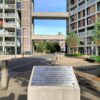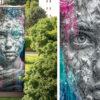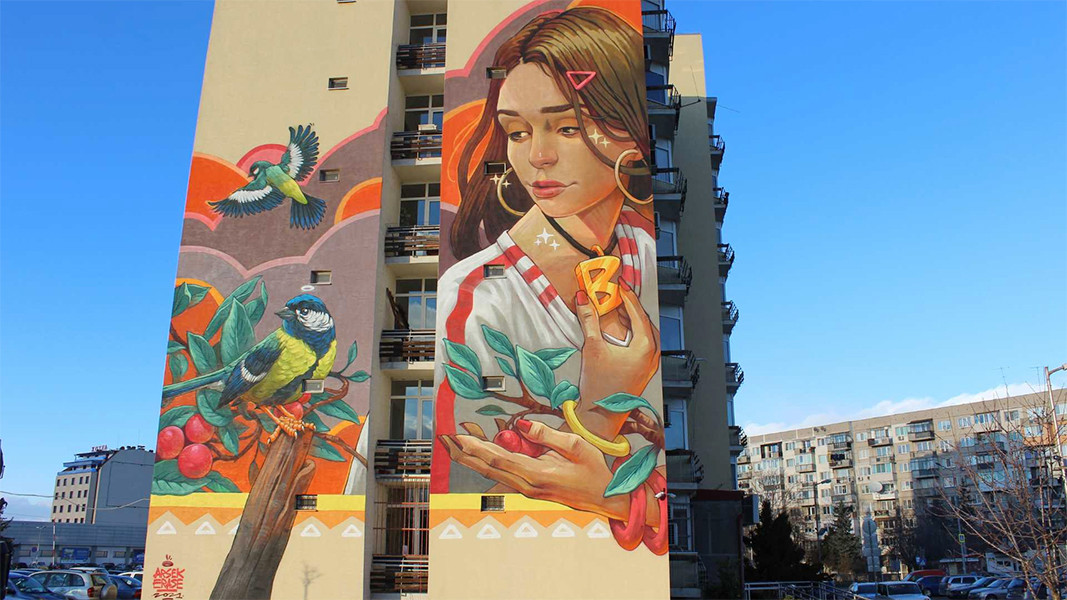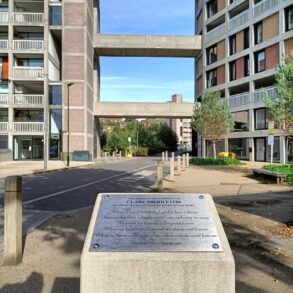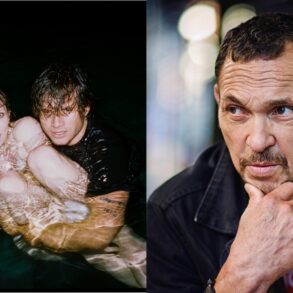In the last days of the past year 2023, one of the best graffiti artists in Bulgaria, Nasimo, and his Fine Graff Art team announced on their FB page their decision to donate all newly received income from reproductions and their free work to ”various educational and others institutions that directly serve our children – our future”.
Stanislav Trifonov, as the real name of the artist Nasimo is, promises to “donate” his talent in the form of murals, paintings and talks, so that children can grow up in a more favourable environment, surrounded by art with a message and incentives for development of their creative potential. And if for the older generation of Bulgarians, graffiti still means only those ugly inscriptions and slogans on the walls from the beginning of the democratic transition in the country, then we must honestly admit that in the last thirty years the street garments of Sofia have become more colorful, beautiful and impressive – worthy of the global street art scene.
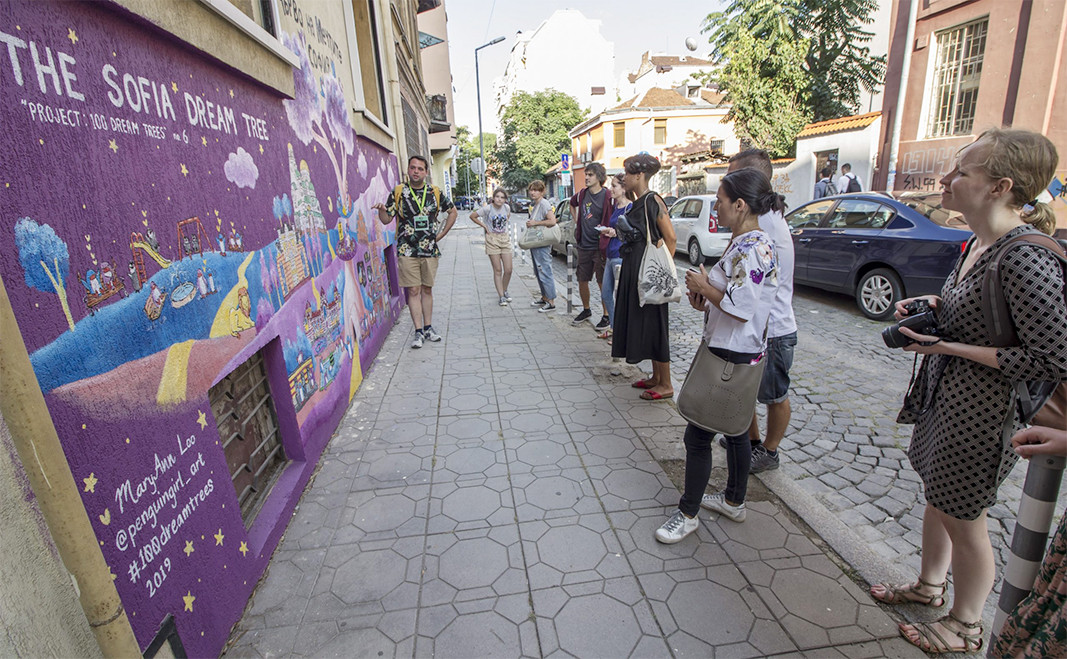
The young team of Sofia Graffiti Tour, created by Tsvetan Bizev and like-minded people, proves it. In 2016, they started organizing walking tours that show graffiti and street art around the streets of the Bulgarian capital. The tours continue to be held to this day, all year round, completely free of charge also in English, so that every foreigner can “see” the true face of our city. Over the years, the young people’s idea grew to the creation of a cultural organization that supports and organizes various festivals, exhibitions, events, master classes and film screenings in support of the native graffiti scene.
And for a week now their biggest dream has come true – the first published bilingual (Bulgarian and English) anthology of street art in Sofia for the last three decades.

“The book is called “Sofia Urban Art” and traces the development of graffiti in Sofia from the beginning of the 1990s until now. This is an attempt to systematize all events in this field – the most important artists, the most important locations, how these drawings grow into the subculture of the place in the first years of the new century and reach the boom after that, with the appearance of the festivals and large-scale murals we see today. We ourselves have been fans of this art for nearly twenty years and it has always been a dream for us that street art and graffiti in Sofia have their own book. I believe this will take the scene to a higher level and open it up to the world. The idea is to present the book outside of Bulgaria as well,” Tsvetan Bizev tells Radio Bulgaria.

It is for this reason that an international partner for the distribution of “Sofia Urban Art” is the largest graffiti and street art museum in Europe “Straat” based in Amsterdam, the Netherlands. The publication is based on years of research, collection of archival footage, numerous conversations with artists and organizers, as well as 600 carefully selected images spread over 256 pages.
Tsvetan says that it is very important to show works and artists that are historically important for this kind of culture in BulgariaКо such as Eric 273 from the beginning of the 21st century, the team of “140 Ideas” responsible for some of the most the beautiful school walls in the city, the bizarre creatures of Bozko and, of course, Nasimo and the group of Destructive Creation, who more than ten years ago tried to “change the clothing” of the Monument to the Soviet Army in line with the times of the Marvel Cinematic Universe.

“Bulgaria is quite solid in terms of style and artists”, Bizev tells us. “We have quite a few representatives who are world-famous and in this regard Bulgaria is developing in parallel with graffiti and street art around the world. From the point of view of providing infrastructure for painting, we should note that in 2023, for the first time in Sofia, a wall was set aside, on which it is administratively permitted. There have been similar locations in Plovdiv and other cities for a long time, and I hope that more and more such places will appear. I personally think that every neighborhood should have its own street art gallery.”

Street art does not necessarily have a social and political context, believes Tsvetan Bizev. But he truly believes that this type of art is increasingly entering the image of a city, changing it to the extent that it bcomes part of its tourist appeal.
”One such example was Lisbon where the municipality itself supports street visual art and organizes various events. They do not set administrative restrictions on how to paint the facades, but give complete artistic freedom.”
Our capital city, in its appearance today, is very similar to Berlin, believes the founder of Sofia Graffiti Tour:
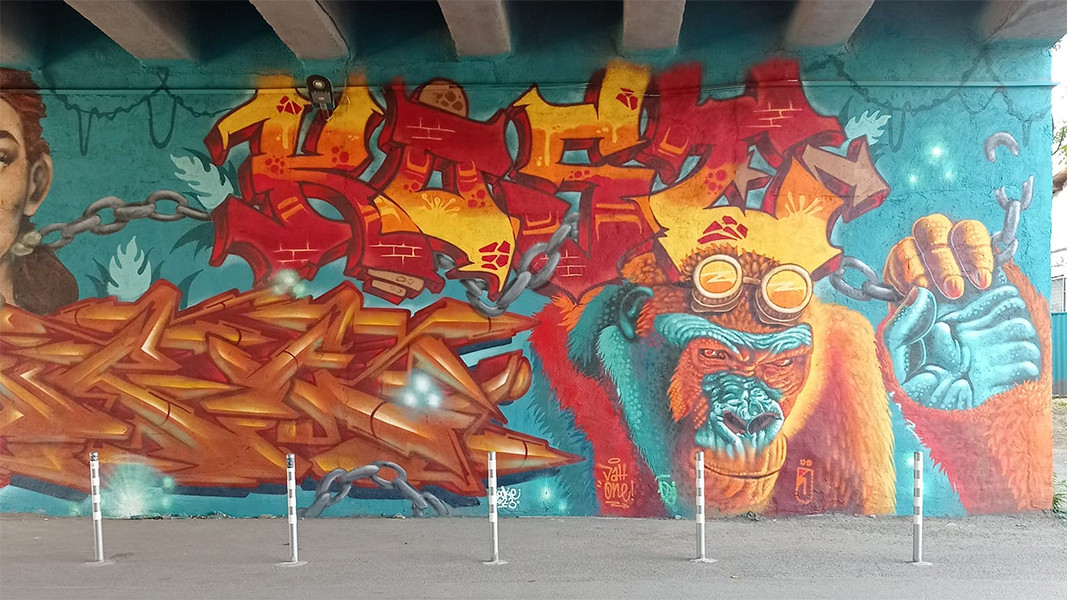
“It’s the urban dynamics. There, too, the dynamics is extremely great from the point of view of new graffiti constantly appearing on the walls, as is the case in Sofia, too.”
Each of Bulgaria’s big cities has its own well-developed graffiti scene, Tsvetan Bizev tells us, and it is worth learning how to perceive it because it is part of modern urban culture. And his wish for the year 2024 is to have more graffiti festivals in Bulgaria which are the basis of the unification and growth of the entire community of street artists and their urban works.
*The book “Sofia Urban Art” is published with the support of the Sofia Municipality and the National Culture Fund.
Read also:
Photos: sofiagraffititour.com, FB / Sofia Graffiti Tour
Translated and published by Rositsa Petkova
This post was originally published on this site be sure to check out more of their content.

